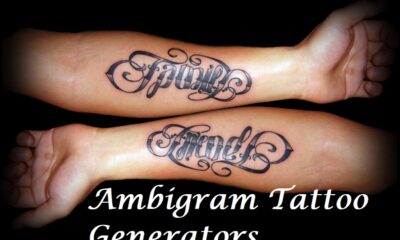General
What It Takes to Succeed in Zora’s Current Occupation: Lessons Learned
Have you ever wondered what it takes to succeed in Zora’s current occupation? Zora has been working tirelessly for years and has learned valuable lessons along the way. Whether you’re just starting out or looking to advance your career, there is much to learn from Zora’s experiences. In this blog post, we’ll explore some of the challenges that come with Zora’s occupation and how she overcame them. We’ll also discuss the invaluable lessons that can be applied to other occupations. So let’s dive in and see what it takes to thrive in Zora’s current profession.
What is Zora’s current occupation?
Zora’s current occupation is in the field of marketing. Specifically, Zora works as a social media manager for a large corporation. Her job involves creating and implementing social media strategies that help promote her company’s brand to a wider audience.
Zora spends most of her day strategizing how to create an engaging online presence for her company by crafting content for various social media platforms such as Twitter, Instagram, LinkedIn and Facebook. She also tracks metrics such as engagement rates, clicks-throughs and conversions with the help of analytics tools like Google Analytics.
To stay ahead of the competition, Zora continually stays up-to-date on the latest trends and best practices in social media marketing. This requires continuous education through attending workshops or webinars or reading blogs from industry thought leaders.
While it may seem glamorous to work in social media marketing, there are challenges too. One challenge is staying relevant amidst rapidly changing algorithms across different platforms which can drastically affect post reach and visibility.
All things considered,Zora has found much success in this line of work due to her dedication towards excellence,tireless effort to keep herself informed about emerging trends,and willingness to continuously improve upon existing strategies.
What are the lessons learned from Zora’s current occupation?
Zora’s current occupation has taught her some valuable lessons that can be applied to any profession. One of the most important lessons Zora learned is the importance of time management. In her line of work, deadlines are critical and missing them can have serious consequences.
Another lesson Zora learned is the value of communication skills. As a professional in her field, she interacts with various stakeholders on a daily basis, including clients, colleagues, and vendors. She quickly realized that being an effective communicator was crucial to building strong working relationships.
Zora also learned about the significance of adapting to change. Her industry constantly evolves with new technology and trends emerging regularly. To remain relevant and competitive, she understood that it was imperative for her to keep up-to-date with these changes by staying informed through research and education.
In addition to these lessons, Zora’s job has taught her resilience when faced with challenges or setbacks. Through perseverance and flexibility in finding creative solutions to problems as they arise, Zora developed an ability to overcome obstacles efficiently.
There are many takeaways from Zora’s current occupation that could benefit anyone looking for growth in their career or personal life: proper time management techniques; effective communication skills; adaptation to change; resilience in challenging situations – all fundamental habits for success.
How can these lessons be applied to other occupations?
Zora’s current occupation may be unique, but the lessons she has learned can be applied to various other careers. One of the key takeaways is that hard work pays off. No matter what your job is, putting in effort and striving for excellence will pay dividends in the long run.
Another lesson to apply to any career is learning from failure. Zora’s job requires her to constantly adapt and learn from mistakes, and this mindset can benefit anyone who wants to succeed in their field. Failure should not discourage you; it should motivate you to keep pushing yourself.
Effective communication skills are also essential in any profession. Zora has learned how important clear communication is when working with clients or team members, as misunderstandings can lead to costly mistakes or delays. Whether it’s through written or verbal means, being able to communicate effectively will set you apart from others.
Having a passion for what you do will make all the difference in achieving success in any occupation. If you truly enjoy your work and have a genuine interest in it, then challenges become opportunities for growth rather than setbacks.
These valuable lessons from Zora’s current occupation remind us that success requires dedication, perseverance and a willingness to learn and grow no matter what path we choose professionally.
What are some of the challenges of Zora’s current occupation?
Zora’s current occupation comes with its own set of challenges. One of the main challenges is managing time effectively. As an entrepreneur, Zora has a lot on her plate and needs to balance various responsibilities. This can be overwhelming at times, but Zora has learned to prioritize tasks and delegate when necessary.
Another challenge is dealing with uncertainty. The business world can be unpredictable and Zora has had her fair share of setbacks along the way. However, she has learned to stay focused on her goals and adapt quickly to changes in the market.
Networking is also a challenge for Zora in her current occupation. Building connections within her industry takes time and effort, but it’s essential for growing her business. She attends networking events regularly and reaches out to potential partners through social media and email.
Managing finances is another hurdle that comes with running a business. It’s important for Zora to keep track of expenses and revenue in order to make informed decisions about future investments or expansions.
Maintaining work-life balance can be difficult when you’re passionate about your job like Zora is. It’s important for her to take breaks from work every once in a while so she doesn’t burn out.
Despite these challenges of running one’s own business or taking up entrepreneurship as one’s career path may seem daunting at times; however embracing them allows individuals like Zora learn valuable lessons which will allow them overcome any obstacles thrown their way along their journey towards success.
How can these challenges be overcome?
Challenges are an inevitable part of any occupation, and Zora’s current job is no exception. The challenges that come with her profession may seem daunting at times, but they can be overcome with the right mindset and strategy.
One way to tackle these challenges is by constantly improving skills through education and training. This could mean taking courses, attending seminars or workshops, reading industry-related books or articles, etc. By staying up-to-date on the latest developments in her field, Zora can stay ahead of the curve.
Another strategy is to seek out mentorship from experienced professionals who have been in Zora’s shoes before. They may provide valuable insights into how to navigate certain situations or offer advice on how to handle specific challenges.
Networking can also help overcome obstacles as it allows for connecting with other professionals in the same industry who have dealt with similar issues. They may offer different perspectives on tackling problems that Zora has not considered yet.
Maintaining a positive attitude towards work and embracing failures as opportunities for growth are crucial when facing workplace difficulties. It helps build resilience which comes particularly handy when dealing with demanding clients or long working hours.
Overcoming occupational hurdles requires effort and perseverance; however building a solid foundation through continuous learning while seeking mentorship from experienced individuals coupled with networking will go a long way towards achieving success in one’s career journey
Zora’s current occupation has taught us valuable lessons that can be applied to any career path. From the importance of perseverance and self-belief to the benefits of networking and staying up-to-date with industry trends, there is much we can learn from Zora’s success.
However, as we have seen, even successful professionals like Zora face challenges in their careers. The key is not to let these challenges discourage us but instead use them as an opportunity for growth. By developing a positive mindset and seeking out support from mentors or colleagues, we can overcome obstacles and achieve our goals.
So whether you are just starting out in your career or looking for ways to advance it further, take inspiration from Zora’s journey and remember that anything is possible with hard work, determination, and a willingness to learn from both successes and setbacks.
Conclusion
Zora’s current occupation has taught us valuable lessons that can be applied to any profession. We have seen how important it is to have a clear understanding of the industry and its trends, as well as the need for consistent learning and upskilling.
We have also learned about the challenges that come with Zora’s occupation and how they can be overcome through determination, perseverance, and proper planning.
By adopting these principles in our own careers, we too can achieve success like Zora. It may not happen overnight but with hard work and dedication anything is possible.
So let us take inspiration from Zora’s story and strive towards achieving our goals by applying these lessons in our daily lives. And who knows .
General
Contexto Answer: Cracking the Context Code

Contexto is a word game that has taken the internet by storm, captivating players with its unique twist on the popular guessing game format. Unlike its predecessor Wordle, which focuses on the exact letters of a hidden word, Contexto delves deeper, challenging players to uncover the secret word based on its context.
This article delves into the world of Contexto, guiding you through its gameplay, strategies, and how to find the elusive “Contexto Answer” for the day’s puzzle.
Unveiling the Mystery: How Contexto Answer
Gameplay Basics:
Contexto Answer presents you with a daily secret word. Your mission: to guess this word by submitting words and analyzing the feedback provided by the game’s AI. Here’s how it works:
- Unlimited Guesses: Unlike games with limited attempts, Contexto allows you to take as many guesses as needed to crack the code.
- Context is King: The key to success lies in understanding how your guesses relate to the secret word. The game doesn’t reveal letters but assigns a position based on contextual similarity.
- Number Ranking: Each guess receives a ranking between 1 and 9999. The lower the number, the closer your guess is to the secret word in terms of its contextual usage.
Understanding the Color-Coded Clues:
Contexto offers visual cues to guide your guesses. After submitting a word, you’ll see it displayed in one of three colors:
- Green (1-300): You’re on the right track! Words in green are highly contextually relevant to the secret word. Aim for this zone to get closer to the answer.
- Yellow (301-1500): Getting warmer, but not quite there. Words in yellow are somewhat related to the secret word, but not as close as those in green.
- Red (Above 1500): Back to the drawing board. Red indicates your guess has little to no contextual connection to the secret word.
The Power of Patience:
There’s no time limit in Contexto, so take your time and analyze the clues provided. With each guess and its corresponding color, you build a picture of the secret word’s context.
Seeking Hints (Optional):
If you get stuck, Contexto offers a hint option (represented by three dots). Clicking this will reveal a new word closer to the secret word, giving you a valuable nudge in the right direction. However, using hints sparingly is recommended to maintain the challenge and satisfaction of solving the puzzle yourself.
Conquering Contexto: Winning Strategies
1. Choosing Your First Word:
The first guess sets the tone for your Contexto journey. Here are some tips:
- Common Words: Start with a common word that appears frequently across various contexts. This helps gauge the overall direction and avoid getting stuck in a niche category.
- Broad Categories: Words like “thing,” “place,” or “action” can be good starting points as they encompass a wide range of possibilities.
- Previous Day’s Answer (Optional): If you know the answer from the previous day, consider a word closely related but not identical. This might provide valuable context clues.
2. Decoding the Color Codes:
Once you start receiving color-coded feedback, it’s time to refine your approach:
- Green Goldmine: When you land a green word, explore synonyms, related concepts, and words that share similar contexts.
- Yellow Stepping Stones: Use yellow words as stepping stones towards greener pastures. Look for words that bridge the gap between your current guess and the secret word’s context.
- Red Rejections: Don’t dwell on red words. Acknowledge the dead end and move on with a new guess that steers clear of that context.
3. Leverage the Power of Elimination:
As you progress, eliminate possibilities based on the feedback. For example, if a guess related to emotions receives a red mark, you can rule out words solely focused on feelings.
4. Diversifying Your Guesses:
Don’t get stuck in a rut. If you’re consistently landing in the red zone, try a completely different category of word to explore new contextual avenues.
5. Collaboration is Key (Optional):
Stuck and can’t seem to crack the code? Discussing your guesses and color-coded clues with friends or online communities can offer valuable insights and fresh perspectives.
FAQs: Frequently Asked Questions About Contexto
Q: Is there a daily reset time for Contexto?
A: Yes, the daily Contexto puzzle resets at midnight local time.
Q: Can I play past Contexto puzzles?
A: Unfortunately, the game doesn’t currently offer the option to play previous day’s
General
Peúgo: Unveiling the Two Sides of a Word

The Portuguese language is rich with diverse vocabulary, and sometimes a single word can hold surprising depth. “Peúgo” is one such example. Depending on the context, it can have two distinct meanings, making it a fascinating word to explore. This article delves into the world of peúgo, uncovering its etymological roots, its contrasting definitions, and its usage in everyday Portuguese.
Unveiling the Etymology: Where Does Peúgo Come From?
The exact origin of “peúgo” remains unclear. However, some linguists propose a connection to the word “peúga,” which translates to “sock” in English. This theory suggests that “peúgo” might have originated as a variant or diminutive form of “peúga,” possibly referring to a shorter type of sock.
Another possibility lies in the realm of onomatopoeia. The sound “peúgo” could be a playful representation of someone splashing in water. This theory, however, lacks strong etymological evidence.
Without a definitive origin story, the word “peúgo” holds a certain mystique. Its ambiguity adds a layer of intrigue to the Portuguese language.
Two Sides of the Coin: The Dual Meanings of Peúgo
The true essence of “peúgo” lies in its ability to represent two contrasting concepts:
-
Meia Curta (Short Sock): This is the most common meaning of peúgo in contemporary Portuguese. It refers to a type of sock that reaches just above the ankle, often worn with casual shoes or sneakers.
-
Hidrolátrico (Water-Lover): This lesser-known definition of “peúgo” is an adjective with a more whimsical character. It describes someone who has a deep love for water, someone who enjoys swimming, diving, or simply spending time near water bodies.
The stark contrast between these meanings highlights the beauty and complexity of language. A single word can morph into different forms, catering to various contexts and adding a touch of surprise for the listener.
Understanding Usage: When to Use “Peúgo”
Knowing the two meanings of “peúgo” is only half the battle. Here’s a breakdown of how to use it correctly in different situations:
Using “Peúgo” as a Noun (Meia Curta):
- When discussing clothing: “Preciso de comprar peúgos novos para a academia.” (I need to buy new peúgos for the gym.)
- Describing someone’s attire: “Ele estava usando jeans e peúgos brancos.” (He was wearing jeans and white peúgos.)
Using Peúgo as an Adjective (Hidrolátrico):
- Highlighting someone’s love for water: “Minha irmã é tão peúga, ela adora nadar no mar.” (My sister is such a peúgo, she loves swimming in the ocean.)
- Describing a group of water enthusiasts: “O clube reúne um grupo de peúgos que gostam de mergulho.” (The club brings together a group of peúgos who enjoy diving.)
Points to Remember:
- While “peúgo” (sock) is the more common meaning, using it as “hidrolátrico” adds a touch of creativity and playfulness to your conversation.
- The adjective form “peúgo” is less frequently used compared to the noun form.
Exploring the Nuances: Formal vs. Informal Settings
The context in which you use peúgo also plays a role. Here’s a quick guide:
-
Formal Settings: In formal situations, it’s best to stick with the more standard vocabulary. Opt for “meia curta” (short sock) instead of “peúgo” (sock). Similarly, “amante da água” (water lover) would be a safer choice than “hidrolátrico” (water-lover) in formal contexts.
-
Informal Settings: Among friends and family, feel free to use “peúgo” in both its noun and adjective forms. It can add a touch of informality and lightheartedness to your conversation.
Remember: Context is key. Choose the meaning and form of “peúgo” that best suits the situation and the level of formality you’re aiming for.
Fun with “Peúgo”: Examples and Idioms (if any)
There aren’t any specific idioms directly related to “peúgo.” However, you can use the word creatively in sentences to add a touch of humor:
- “Ele é tão desorganizado que perdeu um peúgo e nem percebeu!” (He’s so disorganized, he lost a peúgo and didn.
General
The Fascinating World of Geöe: An In-depth Exploration
-

 Fashion2 years ago
Fashion2 years agoBest Free Ambigram Generators to Design Tattoo and Art
-

 General2 years ago
General2 years agoSetup Cross-Domain Tracking In Google Tag Manager
-

 Technology2 years ago
Technology2 years agoThe ascent of the ‘business technologist’ and ‘hyperautomation’
-

 Uncategorized1 year ago
Uncategorized1 year agoThe Best Host Bars In korea
-

 Health and Fitness1 year ago
Health and Fitness1 year agoWhat I Wish Someone Had Told Me About Comfi Pure Contact Lenses
-
Entertainment2 years ago
BUSINESSHow To Keep Readers Engaged With Your Monthly Newsletters
-
Entertainment2 years ago
9Anime: Best Free Anime Streaming Website, 9Anime.gg Alternatives
-
Health & Fitness2 years ago
CRUCIALITY OF THE POC BLOOD GAS TESTING PROCESS

